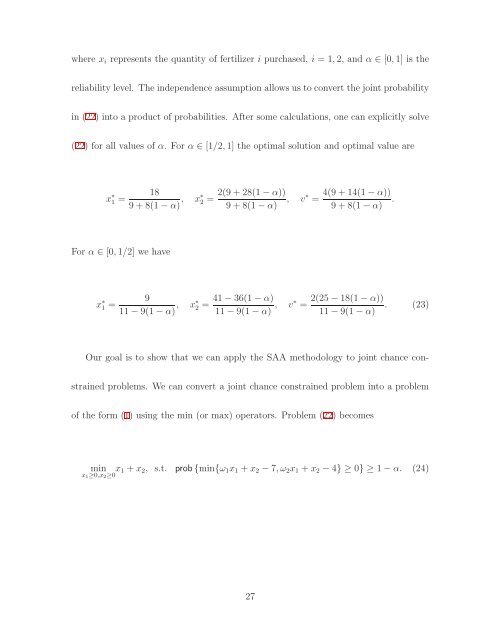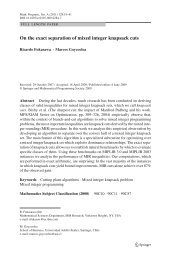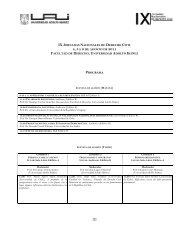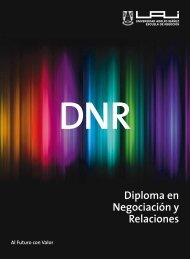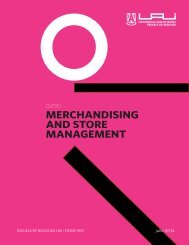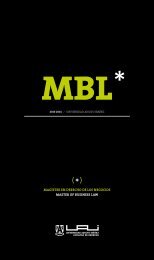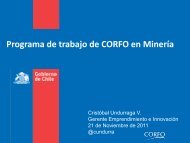Sample Average Approximation Method for Chance Constrained ...
Sample Average Approximation Method for Chance Constrained ...
Sample Average Approximation Method for Chance Constrained ...
- No tags were found...
You also want an ePaper? Increase the reach of your titles
YUMPU automatically turns print PDFs into web optimized ePapers that Google loves.
where x i represents the quantity of fertilizer i purchased, i = 1, 2, and α ∈ [0, 1] is thereliability level. The independence assumption allows us to convert the joint probabilityin (22) into a product of probabilities. After some calculations, one can explicitly solve(22) <strong>for</strong> all values of α. For α ∈ [1/2, 1] the optimal solution and optimal value arex ∗ 1 = 189 + 8(1 − α) , x∗ 22(9 + 28(1 − α))= , v ∗ =9 + 8(1 − α)4(9 + 14(1 − α)).9 + 8(1 − α)For α ∈ [0, 1/2] we havex ∗ 1 = 911 − 9(1 − α) , 41 − 36(1 − α)x∗ 2 =11 − 9(1 − α) , v∗ =2(25 − 18(1 − α)). (23)11 − 9(1 − α)Our goal is to show that we can apply the SAA methodology to joint chance constrainedproblems. We can convert a joint chance constrained problem into a problemof the <strong>for</strong>m (1) using the min (or max) operators. Problem (22) becomesmin x 1 + x 2 , s.t. prob {min{ω 1 x 1 + x 2 − 7, ω 2 x 1 + x 2 − 4} ≥ 0} ≥ 1 − α. (24)x 1 ≥0,x 2 ≥027


